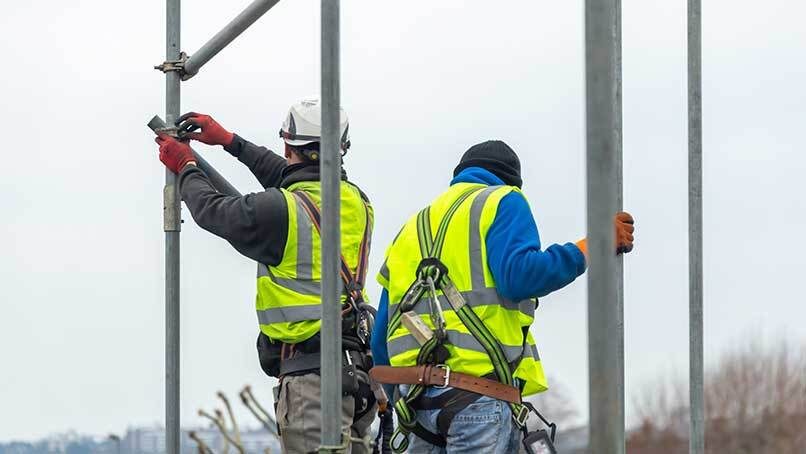Comprehensive Fall Arrest Training in Calgary: Your Safety Guide

In the bustling industrial landscape of Calgary, workplace safety is of paramount importance, especially in industries where the use of elevated platforms and forklifts is common. Accidents involving falls from heights can lead to severe injuries or even fatalities. To mitigate these risks, investing in comprehensive fall arrest training is crucial. This blog will explore the significance of fall arrest training Calgary, emphasizing the importance of a fall protection course and outlining essential fall safety procedures.
Understanding the Need for Fall Arrest Training
Calgary’s industrial sector is characterised by dynamic and fast-paced environments, where workers often find themselves working at elevated heights. Whether it is operating a forklift, working on a construction site, or performing maintenance tasks, the potential for falls is a constant concern. Fall arrest training is designed to equip workers with the knowledge and skills needed to prevent falls and, in the unfortunate event of a fall, minimize the impact on their safety.
The Importance of a Fall Protection Course
A fall protection course in Calgary is an integral component of comprehensive fall arrest training. This specialized training program goes beyond the basics, offering in-depth insights into fall hazards, prevention strategies, and the proper use of fall protection equipment. Here are key elements covered in a fall protection course:
Risk Assessment:
Before any work at height begins, a thorough risk assessment is essential. A fall protection course educates workers on identifying potential hazards, evaluating risks, and implementing preventive measures. This proactive approach is crucial for maintaining a safe work environment.
Correct Equipment Usage:
Proper use of fall protection equipment is fundamental to preventing accidents. A fall protection course provides hands-on training on harnesses, lanyards, and other safety gear, ensuring that workers understand how to use these tools effectively. This knowledge is vital for those operating forklifts or working on elevated platforms.
Emergency Response:
Despite the best preventive measures, accidents can still happen. A fall protection course prepares workers to respond swiftly and effectively in the event of a fall. From self-rescue techniques to coordinating with emergency services, this training ensures that workers are ready to handle emergencies with composure.
Fall Safety Procedures in Calgary
Implementing comprehensive fall safety procedures is a shared responsibility among employers and workers. In Calgary, where industrial activities are diverse and extensive, adhering to these procedures is critical for maintaining a safe workplace. Let us explore some essential fall safety procedures:
Regular Training Refreshers:
Workplace safety is an ongoing commitment. Employers should schedule regular fall arrest training refreshers to ensure that employees stay up to date with the latest safety protocols and equipment usage. This is particularly important in a rapidly evolving industrial landscape.
Heightened Awareness:
Workers should develop a heightened awareness of their surroundings, especially when operating forklifts or working on elevated surfaces. Being cognizant of potential hazards and adhering to safety guidelines can significantly reduce the risk of falls.
Proper Equipment Inspection:
Regular inspection of fall protection equipment is non-negotiable. Frayed ropes, damaged harnesses, or malfunctioning lanyards can compromise safety. Workers must be trained to inspect their equipment before each use and report any issues promptly.
Collaborative Safety Culture:
Establishing a culture of safety requires collaboration between employers and workers. Open communication channels and a commitment to safety from the top down create an environment where employees feel empowered to voice concerns and contribute to ongoing safety improvement.
In the ever-evolving landscape of Calgary’s industrial sector, adapting to new challenges is key. Incorporating technological advancements in fall protection is essential to staying ahead of potential hazards. Employers should consider investing in state-of-the-art fall arrest systems and equipment, such as smart harnesses and advanced anchor points. These innovations enhance worker safety by providing real-time monitoring and immediate alerts in the event of a fall.
Additionally, fostering a culture of continuous improvement is crucial. Employers should encourage feedback from workers regarding safety protocols and equipment effectiveness. Regular safety meetings can serve as forums for sharing insights and experiences, promoting a collaborative approach to mitigating fall risks.
Furthermore, recognizing and celebrating safety milestones can reinforce the importance of fall arrest training. Establishing incentives for employees who consistently adhere to safety guidelines creates a positive reinforcement loop, motivating others to prioritize safety in their daily tasks.

